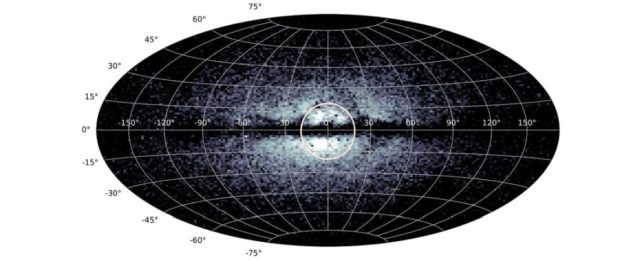A smattering of stars scattered throughout the center of the Milky Way is the remnants of the ancient galactic core, when our galaxy was still new.
Using measurements from the most accurate three-dimensional map of the galaxy ever compiled, as well as a neural network to probe the chemical compositions of over 2 million stars, a team of astronomers have identified 18,000 stars from our galaxy's infancy, when it was just a compact collection of proto-galaxies coming together to dream of bigger things.
Hints of this stellar population have been identified in previous studies.
"But our results," write a team led by astronomer Hans-Walter Rix of the Max Planck Institute for Astronomy, "significantly flesh out the existing picture by showing that there is indeed a tightly bound in situ 'iceberg,' whose tips have been recognized before."
The 13-billion-year history of the Milky Way is a giant, delicious puzzle that needs to be reconstructed from the state of the galaxy today.
Populations of stars can be linked based on traits in common such as their motions and their chemical compositions, a property known as metallicity. This is where ESA's Gaia space observatory comes in.
The satellite has been up there sharing Earth's orbit around the Sun for years, carefully tracking the stars and taking measurements of their three-dimensional positions and motions within the galaxy.
In addition, Gaia takes measurements that allow for estimates of the stars' metallicity.
Metallicity can link stars together, because stars that have a similar composition could have been born in the same place at the same time. But it can also tell us roughly how old a star is, because certain elements just weren't present in the Universe until there had been stars around to make them.
Just after the Big Bang 13.8 billion years ago, there wasn't a lot in the way of elemental diversity.
The primordial Universe mainly consisted of hydrogen, with a little bit of helium, and not a lot else. When the first stars formed from clumps in this medium, their hot dense cores started to smash atoms together to form heavier elements: hydrogen into helium, helium into carbon, and so on, all the way to iron for the most massive stars.
Once stars reach the limit of their ability to fuse atomic nuclei, they die, often in a process like a supernova that sprays the products of their fusion out into space.
Energetic supernovae explosions also produce heavier metals, such as gold, silver, and uranium. Baby stars then take these elements up as they are forming.
The later in the Universe a star forms, the more metals it is likely to have. Higher metallicity therefore means a younger star; and "metal-poor" stars are thought to be older. But not all stellar orbits are the same as they make their way around the galactic center.
When you find a group of stars with similar metal content, on a similar orbital path, it's reasonable to conclude that this group of stars is a population that has been together for a very long time, perhaps from formation.
Rix and his colleagues used Gaia data to look at red giant stars within a few thousand light-years of the Milky Way. They identified 2 million stars, the light from which was analyzed by a neural network that could pinpoint metallicities.
And they found a population of stars with similar ages, abundances, and orbits suggesting that they were present before the Milky Way was filled with stars and puffed up by collisions with other galaxies, starting about 11 billion years ago.
We know that the oldest stars in the Milky Way predate the first major collision, with a galaxy called Gaia-Enceladus, but this population in the galactic center seems to be a coherent population of them.
Rix has called them the "poor old heart" of the Milky Way, because they are metal-poor, very old, and can be found in the heart of the galaxy. The population is, the researchers say, the remnants of proto-galaxies.
These bundles of stars that formed in the early Universe were not full-fledged galaxies, but their seeds. In the Milky Way's infancy, three or four of these seeds clumped together to form the core of what would become our home galaxy.
The poor old heart stars were not born in these proto-galaxies, but are the generation of stars that formed when the proto-galaxy stars died. They are, the researchers found, more than 12.5 billion years old.
The fascinating discovery raises a lot of questions, which the researchers hope to investigate.
What is the spatial distribution of these stars? Do they have any special abundance ratios that could tell us more about the earl conditions of the Milky Way? What can their distribution tell us about the collision history of the Milky Way?
And, perhaps most pressingly, can they lead us to those stars – smaller, dimmer, and harder to find – that may have been in the first proto-galaxies when they came together in the earliest formation stages of the Milky Way?
It may be metal-poor and old, but the ancient heart of the Milky Way could end up being extremely rich with answers about our galactic history.
The research has been published in The Astrophysical Journal.
